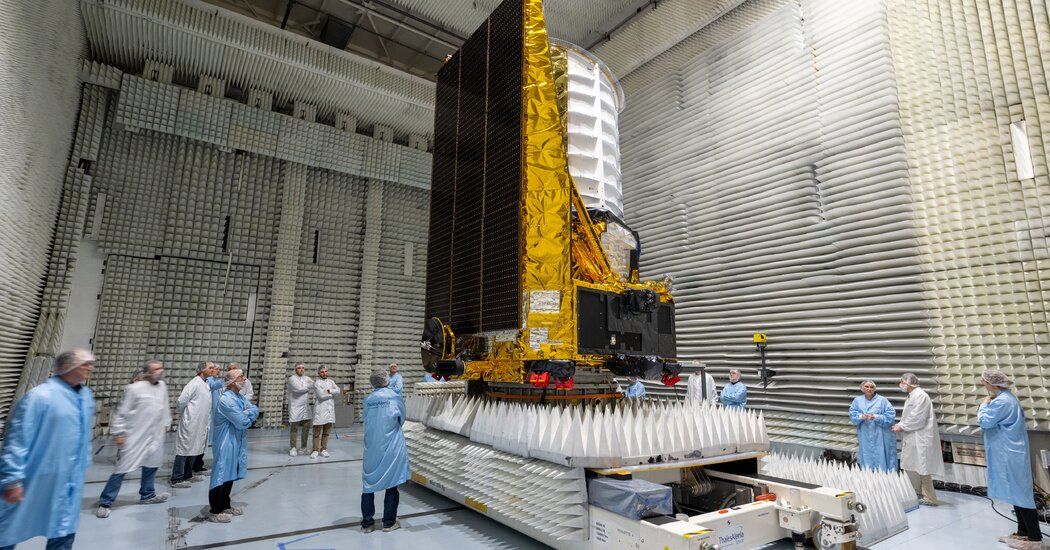How to Watch SpaceX Launch the Euclid Mission to Study the Dark Universe
Should weather or another reason prevent a liftoff on Saturday, a backup launch opportunity is scheduled for the same time on the following day.
What is the Euclid mission?
The Euclid space telescope aims to explore how dark matter and dark energy have shaped the universe throughout space and time. In near-infrared and visible wavelengths, the mission will record over a third of the sky during the next six years, peering into the past to observe galaxies as young as four billion years old.
Unlike the Hubble and James Webb Space Telescopes, which focus deeply on one part of the sky at a time, scientists will use Euclid to cover wide swaths of the extragalactic sky at once. In three of the regions it records, Euclid will reach back even further, imaging the structure of the universe about one billion years after the Big Bang.
What are dark matter and dark energy?
Dark matter — an invisible type of matter that doesn’t emit, absorb or reflect light — has so far evaded direct detection. But scientists know it exists because of its gravitational influence on galaxies moving through the cosmos. Maps of the universe made with the Euclid space telescope’s data will reveal how dark matter gets distributed across space and time by the way it slightly warps the light from galaxies behind it. This is an effect known as weak gravitational lensing.
Euclid will also study dark energy, which is a much more mysterious force that acts like the opposite of gravity: Rather than push objects together, it pulls them apart — so much so that our universe is expanding at an accelerating rate.
Source: The New York Times


